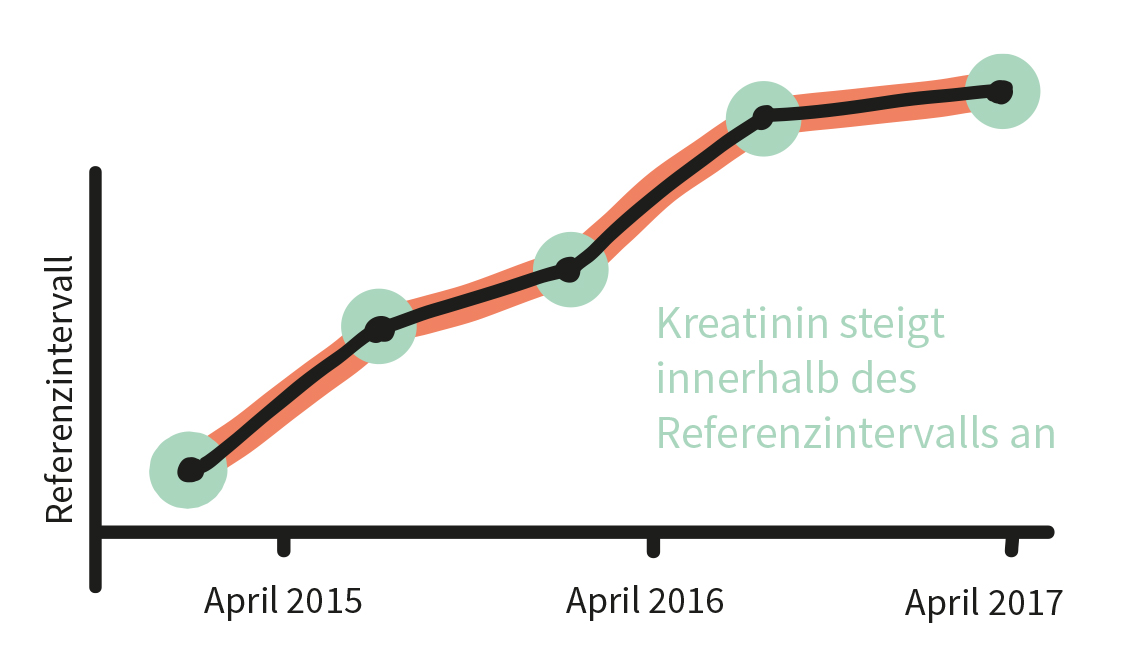CreatinineCreatinine is a breakdown product of muscle metabolism. Its blood level is dependent, among many factors, on age, weight, nutritional status and muscle mass. Hence, creatinine levels in the blood vary from individual to individual. Creatinine is continuously excreted in the urine. Increased blood creatinine... is a breakdown product of muscle metabolism and is one of the Creatinine itself is regarded as an indicator of the filtration capacity of the kidneys, as it is only via the kidneys that it can be excreted. However, several factors can affect creatinine blood levels. These include periods of hunger, fluid intake, muscularity and nutritional status of a cat, and this is precisely the case in lean and emaciated cats, in whom the creatinine level may be too low for the aforementioned reasons.
Each cat therefore has its own normal values. The normal (reference) value for creatinine is relatively wide in cats: approximately 40–170 µmol/l. That’s why, even if your cat is healthy, it’s a good idea to take your cat for an annual blood creatinine test; you’ll find out its individual normal value. This is important, because an increase within the normal range, along with specific urine tests and the SDMASDMA = Symmetrical Dimethylarginine, which is a degradation product of the amino acid arginine and is excreted solely through the kidneys. SDMA is a highly specific biomarker for kidney function in cats. Read more: SDMA test (blood test)... test, can give you an early warning for CKD. The International Renal Interest Society (IRIS) regards creatinine as the main criterion for diagnosis and classification into stages.

IRIS stage 1 CKD indicates a creatinine value of <140 µmol/l, while stage 2 indicates a value of 140–250 µmol/l. In other words, cats that already have CKD may have no detectable azotaemiaIncreased levels of nitrogen-containing breakdown products of protein metabolism in the blood.... – their creatine blood levels are within the normal range. This also explains why creatinine levels alone are not sufficient for either diagnosis or staging= Classification of the cat into a stage of chronic kidney disease according to IRIS.... Azotaemia (raised creatinine and ureaUrea is the nitrogen-containing breakdown product of protein metabolism. The nitrogen from the proteins is converted to ammonia in the liver, which is combined with carbon dioxide to form urea. This is continuously excreted via the kidneys but also via sweat. Urea is one of... levels) is not expected to occur until the later stages, when clinical symptoms also become apparent, usually when only 25% of the nephronsNephrone sind die Filtereinheiten der Nieren.... are still functional.
